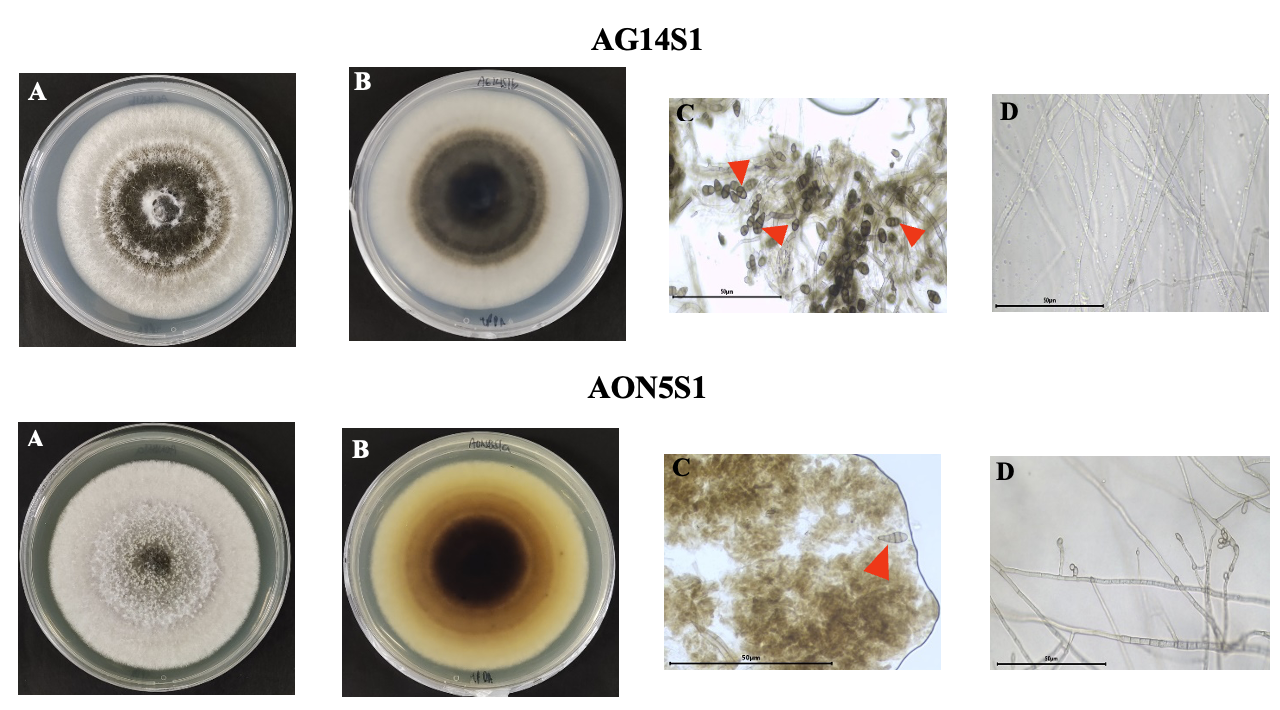VOLUME 15 NUMBER 2 (July to December 2022)

SciEnggJ. 2022 15 (2) 145-165
available online: November 30, 2022
*Corresponding author
Email Address: lsdacones@up.edu.ph
Date received: July 20, 2022
Date revised: October 09, 2022
Date accepted: October 21, 2022
ARTICLE
Detection of Alternaria alternata in post-harvest onion and grapes and the assessment of their phylogenetic relationships and mating potential
Jonas P. Biscocho1,2, Monica Pauline R. Baysa1, and Leilani S. Dacones*1,2
1Institute of Biology, University of the Philippines Diliman,
Quezon City, Philippines
2Natural Sciences Research Institute, University of the Philippines Diliman,
Quezon City, Philippines
Quezon City, Philippines
2Natural Sciences Research Institute, University of the Philippines Diliman,
Quezon City, Philippines
Postharvest diseases account for economic losses due to damages to crops that become unmarketable or decrease in quality. Alternaria alternata is an asexual fungus and a postharvest pathogen of various crops. Here, we described the detection of A. alternata isolates from grapes and onion in the Northern Philippines. A total of eleven (11) isolates were characterized for morphological attributes, estimated the genetic diversity, and consequently assessed for their mating potential. In addition, 29 whole genome assemblies of A. alternata, A. tenuissima, and A. arborescens were included in the analyses for sequence comparison. Cultural and morphological characterization revealed variations among the A. alternata isolates, with no distinct patterns associated with the host of origin or geographic location. Phylogenetic inferences showed a monophyletic clade for all A. alternata with ITS and AA-specific loci. However, the haplotype network based on parsimony exhibited distinct haplotypes and loops in the network indicative of reticulate relationships. Furthermore, isolates from the Northern Philippines all manifested only one mating type idiomorph signifying A. alternata as a heterothallic fungus. These results further provide inferences on the potential diversity of A. alternata isolates in the Philippines that might confer phenotypic advantages such as management strategies implemented against postharvest fungal pathogens.
© 2025 SciEnggJ
Philippine-American Academy of Science and Engineering